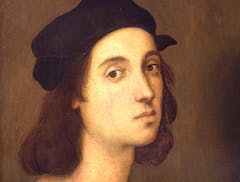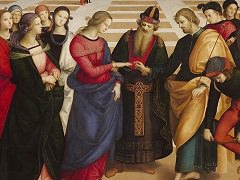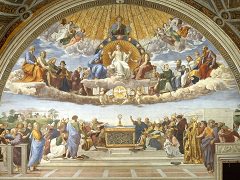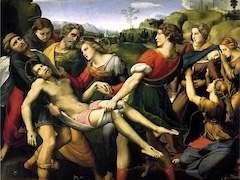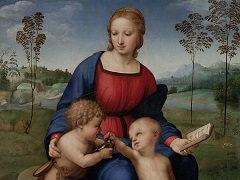The Coronation of the Virgin - by Raphael

The Coronation of the Virgin is the earliest of Raphael's large works held by the Pinacoteca and indeed one of the earliest of all his known altar paintings. It was painted around 1502-1504, shortly after he completed his apprenticeship with Perugino, whose harmonious, graceful figures and style of composition are still very much in evidence in places, leading Giorgio Vasari, in his Lives of the Painters, Sculptors, and Architects of 1550, to attribute the work to Perugino. However, the greater movement of the figures, the audacious diagonal positioning of the sarcophagus, the depth of the landscape, and the individual physiognomies of the figures point unambiguously to the young Raphael.
With The Coronation of the Virgin, Raphael created his first masterpiece. The high panel is clearly divided into a heavenly zone, showing the coronation by Christ of the Virgin, attended by angels, and an earthly zone with the apostles standing around the empty tomb. Some of the heads of the apostles seem to have been worked up as portraits and express a range of different reactions to the event unfolding in heaven. The atmospheric landscape background reveals a Netherlandish influence. The name Pala Oddi ("Oddi Altarpiece") derives from the Oddi family who commissioned the altar for their sepulchral chapel in Perugia. In addition to the main image, the altar also comprised three predella scenes, which are also housed in the Pinacoteca (inv. 40335).



